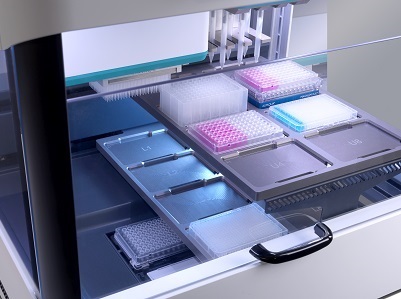
by Paul Lomax, Head of Genomics, SPT Labtech
Next-generation sequencing (NGS) has changed the face of research, giving scientists deeper insights into the most challenging problems. As the cost of sequencing continues to decrease, NGS technology is becoming more accessible, subsequently appearing in diverse research applications from disease-specific panel development to the creation of personalized medicines. However, the broader utility and accessibility of NGS comes with a corresponding growth in the number of samples that labs are required to handle.
Historically, NGS sample preparation has been a demanding process. Traditional workflows can be time-consuming and challenging, with small volumes of difficult-to-handle liquids, and protocols that require meticulous pipetting, dispensing, incubating, and shaking of samples. Owing to such complexities, scaling NGS protocols effectively and reproducibly to accommodate the influx of samples can be a significant hurdle.
Automating liquid handling is a promising solution to streamline the NGS workflow, enhance efficiency, and enable labs to handle larger numbers of samples more consistently. But not all automated systems are created equally. To leverage automation in a way that truly adds value to your NGS experiments, you must consider certain key factors.
In this article, we explore the role of automation in NGS workflows, how it can address common challenges in sample preparation, and highlight the crucial elements you should consider to get the most from your NGS experiments.
Read more on Labcompare